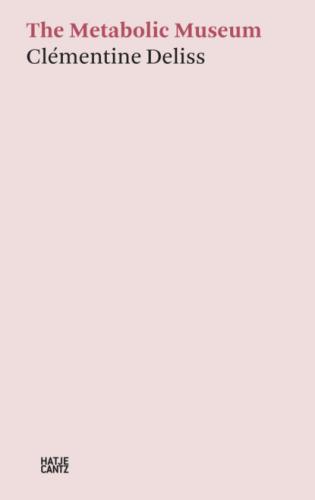The Metabolic Museum
Clémentine Deliss
Inside the museums, infinity goes up on trial.
Bob Dylan, “Visions of Johanna,” 1966
Managing editor
Lena Kiessler
Project management
Anja Tschörtner
Copyediting
Kimberly Bradley
Production
Vinzenz Geppert
© 2020 Hatje Cantz Verlag, Berlin, and the author
Published by
Hatje Cantz Verlag GmbH
Mommsenstraße 27
10629 Berlin
A Ganske Publishing Group Company
Co-produced with KW Institute for Contemporary Art
isbn 978-3-7757-4780-6 (Print)
isbn 978-3-7757-4801-8 (eBook)
We cannot be held responsible for external links; the content of external links is the full responsibility of the operators of these sites.
Table of Contents
Manifesto for the Post-Ethnographic Museum
The Consequences of Remediation
Manifesto for Rights of Access to Colonial Collections Sequestered in Western Europe
A few years back, some close friends encouraged me to apply for the directorship of an ethnographic museum in Germany. At first, I was cautious. I had been working independently as a curator and publisher for more than twenty years, traveling from city to city to set up new projects with artists, and I was keen to retain my autonomy. At the same time, I needed to settle down and transfer my experience onto an environment I could qualify with my own model. I was selected for the job and moved to Frankfurt, where I lived for five years. This is the narrative of my endeavor to transform the modus operandi of a contentious genre of European museum and develop a post-ethnographic institution.
Sometimes renamed museum of world cultures, the ethnographic museum is the most extreme rendition of a cultural institution that retains “colonial presence” even today.1 While I focus on the crisis of this particular museum, I hope to address other types of venue that hold collections and recognize the necessity to rethink their constitution in the twenty-first century. If museums have to be pioneering and fight against routine, habit, and conservatism, what model of critical and reflexive methodology can be deployed on existing, forgotten, soiled, or non-restituted collections?
The subjective, dialogical activity undertaken in collaboration with artists, designers, writers, anthropologists, and lawyers at the Weltkulturen Museum between 2010 and 2015 consolidated the modus operandi of my earlier transdisciplinary curatorial practice. In Frankfurt, I sought to generate movement within the museum’s institutional structure, affecting how we worked and where the priorities lay for a museum, both internally and toward the public. Located in three nineteenth-century villas, our domestic research centered on the tens of thousands of artifacts and the vast photographic archives housed within the museum.
This book was written in great part while I was a fellow of the Wissenschaftskolleg zu Berlin, the Institute of Advanced Study in Berlin. Practically airlifted out of Frankfurt, I was given a room of my own, safeguarded from inquisitive journalists, and encouraged to write up this experience as if it had been my own fieldwork in the museum. With the help of my notebooks, I was able to reconstruct the logic of each resolution that I took on a day-to-day basis until that day in April 2015 when the city of Frankfurt unfairly dismissed me.
I am grateful to the many friends, colleagues, and allies who supported me both during and after my time at the museum. In particular, I would like to thank Michael Oppitz most warmly for having faith in my approach and for accompanying me when my professional world fell apart; Paul Rabinow for his friendship since the mid-eighties when we were both in Paris, his guidance from afar, and his incisive and inspiring work around the concept of remediation. From the perspective of art practice, I thank all the artists and writers who trusted me as a curator, keen as I was to divert them from any banal orthodoxy of institutional practice by drawing them into unforeseeable situations and encouraging conceptual work with these sensitive and vital collections. In particular, I would like to highlight the stimulating and inspired collaborations that took
